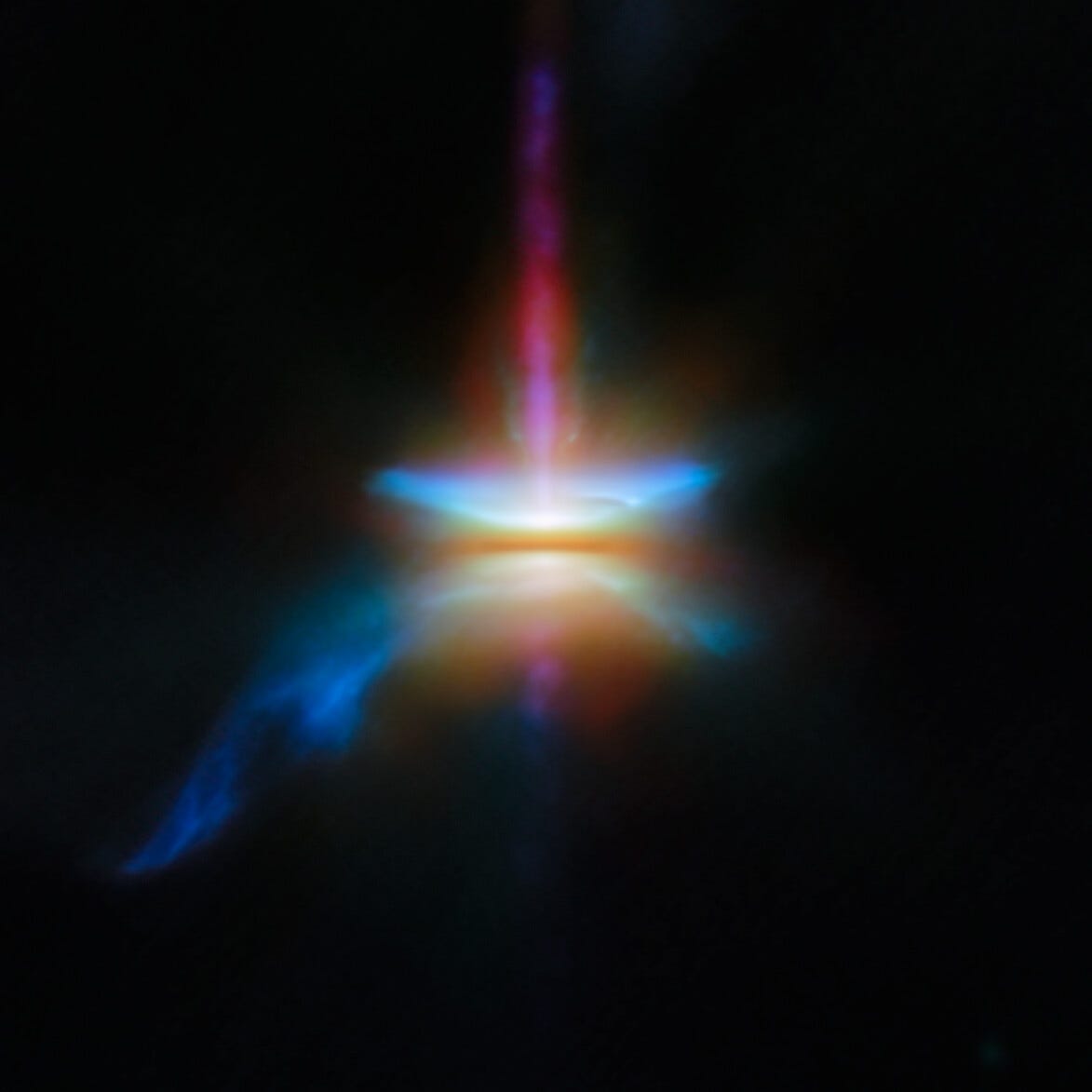
The Glowing Cradle of Star and Planet Birth: Unveiling the Mysteries of HH 30
The Cosmic Nursery
In the depths of the Taurus constellation, approximately 450 light-years from Earth, lies a celestial treasure—a young protostar, nestled within a dark molecular cloud. This enigmatic object, designated as HH 30, has captivated the attention of astronomers for decades, offering tantalizing clues about the enigmatic processes of star and planet formation.
A Stellar Dawn
HH 30 is a Herbig-Haro object, a vibrant beacon of cosmic emission that accompanies newborn stars. These ethereal formations arise from the energetic jets of gas ejected by nascent celestial bodies, colliding with the surrounding interstellar medium.
Hubble’s Early Glimpse
The Hubble Space Telescope initially discovered HH 30, providing a tantalizing silhouette of its protoplanetary disk—a swirling torus of gas and dust that encircles young stars. However, Hubble’s limitations in infrared observation hindered a more comprehensive understanding of this celestial wonder.
Webb’s Unprecedented Revelation
Enter the James Webb Space Telescope, the most formidable cosmic observatory ever launched into orbit. With its unparalleled infrared capabilities, Webb has pierced through the veil of interstellar dust, revealing the intricate details of HH 30 in unprecedented clarity.
A Cosmic Tapestry
Through the combined observations of Webb, Hubble, and the Atacama Large Millimeter/submillimeter Array (ALMA), astronomers have assembled a stunning cosmic tapestry. The resultant image, released by the European Space Agency as its "picture of the month," unveils a mesmerizing interplay of light and energy.
Dissecting the Disk
Across the image, a dark band represents the protoplanetary disk, with a faint glow emanating from the hidden protostar. A vibrant jet shoots skyward, leaving a trail of debris in its wake.
Birth of Celestial Building Blocks
By tracing the movement and distribution of dust grains within the disk, researchers have gained invaluable insights into the genesis of planets. As these grains collide and coalesce, they form the seeds of future rocky worlds. Alongside these rocky clumps, several gas outflows are visible, including a narrow, high-velocity jet and a wider, cone-shaped outflow illuminated by the star within the disk.
A Symphony of Creation
These observations paint a vivid picture of HH 30 as a dynamic celestial forge, where tiny dust particles and powerful jets play an intricate choreography in the birth of new planets.
Webb’s Cosmic Legacy
The James Webb Space Telescope, a testament to human ingenuity and scientific endeavor, continues to revolutionize our understanding of the cosmos. Its ability to unveil the intricate workings of star and planet formation, and its potential to unravel the mysteries that have long eluded astronomers, makes it a beacon of hope and a harbinger of transformative discoveries.
